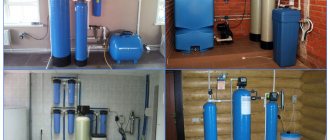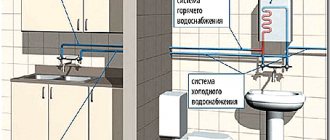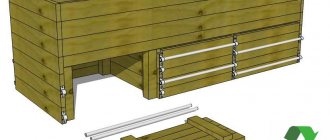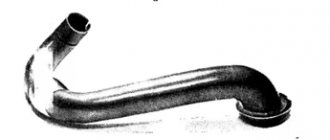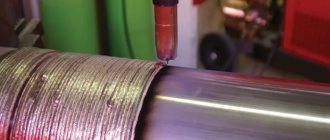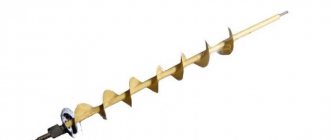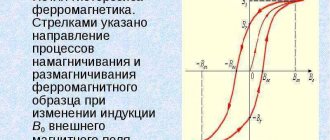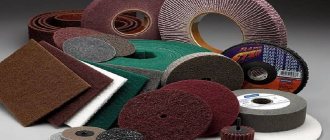Docking of conveyor belts
There are various methods of joining conveyor belts that provide a high level of strength. For this, various adhesive compositions can be used. When considering common methods of connecting conveyor belts, the following points should be taken into account:
- At the time of the procedure in question, the product is subject to layer-by-layer cutting. That is why the work can only be carried out by a professional who has relevant experience.
- Some technologies are characterized by the fact that the procedure is labor-intensive, others are much simpler.
- The methods used are limited by the ambient temperature and humidity at which gluing occurs. Attention is also paid to the importance of humidity and the degree of dust in the room.
Do not forget that high joint characteristics are achieved when the required amount of time is given for the glue to dry. In most cases, polymerization occurs within 20 hours. When docking, you must follow all recommendations, since with a large mechanical impact there is a risk of rupture.
Mechanical connection without vulcanization
This is the fastest connection method, but not the most reliable. The service life of a spliced strip using bolts, rivets or hinge elements does not provide the required reliability and leads to accelerated wear of both the belt itself and the conveyor parts. The mechanical connection of conveyor belts is attractive because work can be carried out in any weather, indoors and outdoors, without the use of complex equipment.
To connect fragments, detachable and one-piece parts are used. The first includes special hinges, the second - rivets and bolts. Locks for connecting conveyor belts are produced at the factory, both detachable and non-detachable. One-piece type Bolt Solid Plate, B3, and detachable FLEXCO type Alligator, B1 and B2 are used for all types of rubber-fabric belts. But for permanent locks there are restrictions on the thickness of the tape and the permissible load. In this case it is 6-30 mm and 105 kN. Detachable mechanisms are used for tapes 4-19 mm with a strength of up to 600 kN.
Mechanical joining of conveyor belts has a number of advantages. This:
- speed of work;
- inexpensive components;
- ability to work in dusty conditions and outdoors;
- applicability of the method for both temporary repairs and long-term operation;
- ease of use for conveyors with variable strip lengths.
Disadvantages include low strength compared to vulcanization, possible damage to metal rollers, danger of sparks, and leaky joints, which creates a risk of cargo spillage.
How to cold join a conveyor belt
Conveyor belts are often joined using the cold vulcanization method. This is due to the fact that the technology is quite simple, but the strength of the resulting contact when used is reduced by 25%. Cold vulcanization of conveyor belts has the following advantages:
- In most cases, there is no need to remove the belt from the conveyor mechanism.
- To carry out such technology, it is not necessary to supply a voltage of 380V. This reduces costs and significantly simplifies the procedure.
- Work on joining the product can be carried out even in a limited space. In addition, the degree of flammability of the room can be quite high.
- Quite a high speed of repairs. As practice shows, after just a few hours the operation of the device can resume.
Docking of conveyor belts when using cold technology is also characterized by a fairly large number of disadvantages, which include the following:
- Such work can only be carried out at an ambient temperature of at least 5 degrees Celsius.
- Cold vulcanization technology cannot be carried out in high humidity and heavily dusty environments.
Despite the sufficient simplification of the technology for gluing conveyor belts through the use of special adhesives, it can only be carried out by specialists. Mistakes made cause fasteners to break even under minimal load.
Hot joining of conveyor belt
On sale you can find a fairly large number of special compounds that are used to restore conveyor belts. Hot vulcanization of conveyor belts is a very common technology, since under the influence of high temperature and pressure two bases are glued together. Synthetic and natural rubber resins have become quite widespread, which, when melted, create a reliable connection. Equipment for joining conveyor belts and special compounds make it possible to achieve strength that is 10% less than the original value. When joining using the hot vulcanization method, high strength can be achieved. This technology is characterized by the following advantages:
- The jointing of conveyor belts allows us to achieve high strength at the joint.
- The vulcanization of the conveyor belt makes it possible to achieve uniformity of the layer at the junction.
- There is no gap at the fastening point. Due to this, the uniform movement of the product along the rollers and other fixing elements is ensured.
- It is possible to carry out the procedure even at low ambient temperatures, as well as in very dusty rooms. That is why the task is significantly simplified; hot vulcanization does not require a special room.
- High degree of flexibility of the resulting joint seam. Due to this, it is possible to install the product on a mechanism that can transport the substance along a complex trajectory.
- The procedure in question can be carried out without dismantling the equipment. That is why the task is significantly simplified and accelerated.
- It is possible to use hot joining technology for the belt, which can be used to transport a wide variety of materials.
- Durability of the resulting product. As practice shows, the technology used allows you to extend the service life several times.
- The tape can be operated at the same temperature conditions as before the joining technology.
The above information indicates that this technology has quite a lot of advantages. However, there are several serious disadvantages:
- It takes quite a lot of time to dock products.
- The procedure can only be carried out using special equipment.
The hot vulcanization method has become very widespread today. However, it is not applicable in all cases; in some cases, the mechanical method is most suitable.
How to glue conveyor belt
The procedure for joining the free ends of a conveyor belt initially presupposes the experience and qualifications of the employees involved in this operation.
Joining the belt is a very labor-intensive operation, so this action will require several specialists who understand how to properly sew a conveyor belt
and have perfect command of the necessary tools.
Strict recruitment requirements must be strictly adhered to.
This attitude helps to avoid the risk of injury and production downtime associated with defective belt splices for conveying equipment.
.
Mechanical joining of the conveyor belt
The proposed method makes it possible to connect rubber-fabric and PVC tapes used for conveyor delivery.
The use of this technology makes it possible to minimize the joint area, which leads to cost savings when purchasing tape. Preparatory work and operation time takes minimal time.
A team of two professional workers (who know how to sew a conveyor belt) completes the task within 30 minutes.
For joining, a swivel joint is used, which is detachable, which greatly simplifies the installation and dismantling work performed with the tape. This joining method does not change the thickness.
This allows the tape to pass through the cleaning mechanisms without problems.
The use of a mechanical connection method is practically irreplaceable in emergency situations in critical industries: metallurgy, mining, construction.
Bonding of conveyor belt using hot vulcanization method
The method of connecting conveyor belts using hot vulcanization is the most reliable of all currently available. It is used in industries that use heat-resistant or rubber rope belts for conveyor belts.
This method has the following advantages:
- increased connection strength;
- the ability to carry out docking work at sub-zero ambient temperatures;
- low-cost materials are used to perform the work;
- inaccuracy is allowed when cutting the tape;
- It is possible to join rubber rope products.
Important! Hot vulcanization of conveyor belts is prohibited under the following conditions:
- with increased dust content in the environment;
- humidity more than 80%.
Mechanical connectors RSM
Some conveyor belt connectors have become very widespread, as they can significantly simplify the procedure and speed up its implementation. However, in some cases it is possible to dismantle it. The undoubted advantage of the technology is that it does not require special equipment. To carry out such a procedure, the following is required:
- The rivet material is characterized by the fact that it can withstand very high loads.
- Hinged-rivet type is most often used on rubber-fabric and polyvinyl chloride versions.
- The one-piece bolt method is used when it is necessary to ensure a high-quality connection of transport belts.
- Hinged and bolted ones have become very widespread in cases where it is necessary to restore a product that is installed on drum equipment.
- Wire locks can be called special structural elements that are used to restore transport equipment, which is widespread in food production or warehouses.
- Staple fastenings can also be used for joining lightly loaded transport belts, which are an important part of conveyor equipment.
It should be borne in mind that the mechanical method of restoration is very common today. However, do not forget about the severe wear of the fastening element used. This is why technology is used when others cannot be used.
The mechanical method is characterized by a fairly large number of significant disadvantages:
- Reduced service life.
- Low strength at the joint.
- There is an increased degree of wear at the joint.
- Due to the use of metal elements, there is a possibility of sparks.
- When transporting hot-rolled products, there is a possibility of burning the surface at the joint.
There is also special equipment on sale that can be used to connect the product mechanically. Thanks to such tools, it is possible to carry out restoration work without dismantling.
Connection strip - KVM plate
| The KVM joining strip (plate) is applicable in cases where the joint must be at the level of elasticity of the canvas itself. In addition, the connection becomes leak-free, which is important when transporting bulk materials. Conveyor belt connectors allow the joint to be made at an angle, which ensures easy passage of the belt under the scrapers and along the drum. The strip is produced in three types, each of which is designed for repairing materials with different breaking forces. |
From us you can buy effective locks for conveyor belts that meet your conditions. We offer low prices and high quality service.
Swivel joint um1000 11 um1750 15
This method of connecting conveyor belts has become quite widespread. In this case, the connection is made using a special tool, which allows you to obtain a joint represented by a combination of a lock and a zipper. The instructions for hinged connection of conveyor belts are divided into two main groups: preparation, pressing, completion of work. The preparatory stage looks like this:
- Both ends are cut at an angle of 90 degrees, for which you can use a special knife or square.
- If necessary, the top and bottom layers are removed; the recommended thickness is 15 mm.
- The number of fasteners is checked according to the width of the product. In this case, 30-40 mm are retreated from each edge.
- If two pieces of different widths are joined, then the number of connecting elements is chosen to be smaller.
- Using a measuring tool, the central part is determined.
- Do not forget that the docking starts from the center to the edges.
- Fasteners are placed in the tool, after which they are fixed.
The next step is to directly press in the fasteners used. Features include the following:
- The impact mechanism is installed in special guides.
- You should hold the device with your left hand, after which light blows are performed until the fasteners are completely seated.
After joining two elements, the edges should be cut at an angle of 30 degrees, thereby eliminating the possibility of tearing. The rod is also additionally fixed near the edge. At the time of work, it is not recommended to use a hammer whose weight is more than 1.5 kg. This is because too much weight can cause damage to the underlying surface. Fastening and installation with fasteners is carried out over a short period.
Plug-in connectors k20 type k27 and k28
In some cases, the joining of the conveyor belt is carried out using detachable elements, which allow for quick dismantling if necessary. For this purpose, wire staples with a special protective coating are used. Among the features of their use are the following:
- It is allowed to be used if the thickness of the product is from 8 to 13 mm.
- The required degree of strength is not higher than 1000 N/mm.
Fastening detachable connections also requires special tools, which greatly simplify the task.
Locks for bolt-type conveyor belts FLEXCO 140E, 190E and SELFLEX BR12, BR20, BR10
The bolt-type conveyor belt lock is a permanent connection; it is successfully used when joining fabrics operating under high voltage on large-diameter drums. There are no moving elements in the connection, so it is reliable and durable. Bolt-type conveyor belt locks FLEXCO 190E, 140E and SELFLEX BR20, BR12, BR10 have gained fame and popularity.
The main parameters of bolted connections SELFLEX BR10, BR12, BR20 and FLEXCO 140E, 190E are listed below:
| Designation | BR 10 | BR 12 | BR 20 | 140E | 190E |
| Tape thickness, mm. | 5-8 | 8-12 | 8-15 | 5-11 | 8-14 |
| Strength, N/mm. | 400 | 750 | 750 | 400 | 630 |
| Minimum drum diameter, mm. | 250 | 450 | 750 | 300 | 400 |
Advantages of the locking method of docking
There are several significant advantages of using locks. Let's take the following as an example:
- Increased strength.
- Sufficient flexibility at the connection point.
- The elements used can last for a long period.
The above information indicates that such technology is often used precisely because of the large number of advantages.
In conclusion, we note that it is quite difficult to carry out docking yourself without special equipment. That is why it is recommended to entrust the work to professionals who specialize in carrying out such work. The special tools required for cold or hot plasticization can be found commercially. Only with proper application can you achieve your goals.



